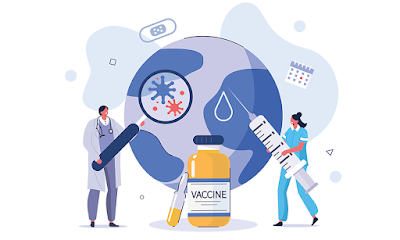Regular exercise is one of the most important habits you can adopt for your overall health and well-being. Not only does it help you maintain a healthy weight, but it also reduces the risk of chronic diseases, improves mental health, and enhances the quality of life. In this comprehensive guide, we’ll explore why regular exercise is crucial, the common issues related to a sedentary lifestyle, and tips on how to overcome these challenges.
1. The Health Benefits of Regular Exercise
1.1 Physical Health: One of the most obvious benefits of regular exercise is improved physical health. Engaging in activities like walking, running, cycling, or strength training can help maintain a healthy weight, strengthen muscles and bones, and improve cardiovascular health. Regular exercise also helps to control blood sugar levels and reduce the risk of developing type 2 diabetes.
1.2 Mental Health: Exercise is not only good for the body but also for the mind. Physical activity has been shown to reduce symptoms of depression and anxiety. It boosts the production of endorphins, the body’s natural mood lifters, and can also improve sleep patterns, leading to better overall mental health.
1.3 Longevity: Regular exercise is associated with a longer life expectancy. Studies have shown that people who engage in regular physical activity are less likely to suffer from chronic diseases like heart disease, stroke, and certain cancers. This means that staying active not only improves the quality of life but can also extend it.
1.4 Improved Immune System: Regular physical activity can boost the immune system, making the body more efficient at fighting off infections and diseases. Moderate exercise is linked to improved immune response, potentially reducing the risk of colds and other common illnesses.
2. Common Problems Due to Lack of Exercise
2.1 Obesity: One of the most significant issues caused by a lack of exercise is obesity. A sedentary lifestyle leads to weight gain, which can escalate to obesity if not addressed. Obesity is a major risk factor for various health problems, including heart disease, diabetes, and certain types of cancer.
2.2 Cardiovascular Disease: Without regular exercise, the heart and blood vessels can become weaker over time, leading to an increased risk of cardiovascular diseases, such as heart attacks, strokes, and high blood pressure. Regular physical activity helps to strengthen the heart, improve circulation, and reduce cholesterol levels.
2.3 Mental Health Issues: A sedentary lifestyle can contribute to the development of mental health disorders, including depression and anxiety. Physical activity is essential for the release of neurotransmitters like serotonin and dopamine, which are critical for mood regulation.
2.4 Musculoskeletal Problems: Lack of exercise can lead to musculoskeletal issues, such as back pain, joint stiffness, and osteoporosis. Regular exercise, particularly strength training and flexibility exercises, helps maintain muscle mass, improves joint function, and enhances bone density.
3. Best Treatments for Exercise-Related Challenges
3.1 Starting Small: For those new to exercise or coming back after a long break, starting small is key. Begin with low-intensity activities, such as walking or swimming, and gradually increase the intensity and duration as fitness improves. Consistency is more important than intensity in the early stages.
3.2 Setting Realistic Goals: Setting achievable goals is essential for maintaining motivation. Whether it’s aiming to walk for 30 minutes each day or running a 5K, having clear objectives can help keep you on track.
3.3 Mixing Up Your Routine: Variety is the spice of life, and this is especially true when it comes to exercise. Mixing up your routine with different types of workouts, such as cardio, strength training, and flexibility exercises, can prevent boredom and help you target different muscle groups.
3.4 Staying Hydrated and Eating Right: Proper hydration and nutrition are critical for maximizing the benefits of exercise. Drinking enough water before, during, and after workouts helps maintain energy levels and prevent dehydration. Additionally, a balanced diet rich in fruits, vegetables, lean proteins, and whole grains provides the nutrients needed for recovery and muscle building.
3.5 Addressing Injuries: Exercise can sometimes lead to injuries, especially if done improperly or too intensively. Common injuries include sprains, strains, and overuse injuries like tendonitis. It’s important to listen to your body and rest when needed. If you experience persistent pain or discomfort, consult a healthcare professional. Physical therapy may also be recommended for certain injuries.
4. Medications and Supplements for Enhanced Performance
4.1 Over-the-Counter Pain Relief: For minor aches and pains associated with exercise, over-the-counter pain relievers like ibuprofen (Advil, Motrin) or acetaminophen (Tylenol) can be helpful. These medications can reduce inflammation and manage pain, making it easier to stay active.
4.2 Anti-Inflammatory Medications: Nonsteroidal anti-inflammatory drugs (NSAIDs), such as naproxen (Aleve), are commonly used to treat inflammation and pain resulting from exercise-related injuries. However, these should be used sparingly and under the guidance of a healthcare professional to avoid potential side effects.
4.3 Muscle Relaxants: In some cases, muscle relaxants may be prescribed to alleviate muscle spasms and stiffness. These medications can help ease discomfort and improve mobility, especially after an intense workout.
4.4 Supplements for Recovery: Certain supplements can support exercise recovery and enhance performance. Common supplements include:
- Protein Powder: Helps in muscle repair and growth.
- BCAAs (Branched-Chain Amino Acids): Support muscle recovery and reduce soreness.
- Creatine: Improves strength and increases lean muscle mass.
- Electrolytes: Help maintain fluid balance and prevent dehydration.
4.5 Caffeine and Pre-Workout Supplements: Caffeine is a popular ingredient in many pre-workout supplements due to its ability to boost energy and improve focus. When used appropriately, these supplements can enhance workout performance and endurance.
5. Creating a Sustainable Exercise Routine
5.1 Find an Activity You Enjoy: Exercise shouldn’t feel like a chore. Finding an activity you enjoy, whether it’s dancing, hiking, or playing a sport, can make it easier to stick with a routine. The key is to make physical activity a regular and enjoyable part of your lifestyle.
5.2 Incorporate Physical Activity Into Daily Life: Regular exercise doesn’t always mean hitting the gym. Incorporating more movement into your daily life can be just as effective. Take the stairs instead of the elevator, walk or bike to work, or engage in active hobbies like gardening or playing with your kids.
5.3 Monitor Progress and Adjust: Keep track of your progress, whether it’s through a fitness app, journal, or simply noting how you feel. Adjust your routine as needed to stay challenged and avoid plateaus. Celebrate your achievements, no matter how small, to stay motivated.
5.4 Social Support: Exercising with a friend or joining a fitness group can provide social support and make the experience more enjoyable. Having someone to share your journey with can boost accountability and keep you motivated.
Conclusion
Regular exercise is a cornerstone of a healthy lifestyle, offering numerous physical, mental, and emotional benefits. By understanding the challenges of inactivity and adopting a sustainable exercise routine, you can improve your health, prevent chronic diseases, and enhance your quality of life. Whether you’re a seasoned athlete or just starting, remember that every bit of movement counts towards a healthier, happier you.






.jfif)














.jfif)












